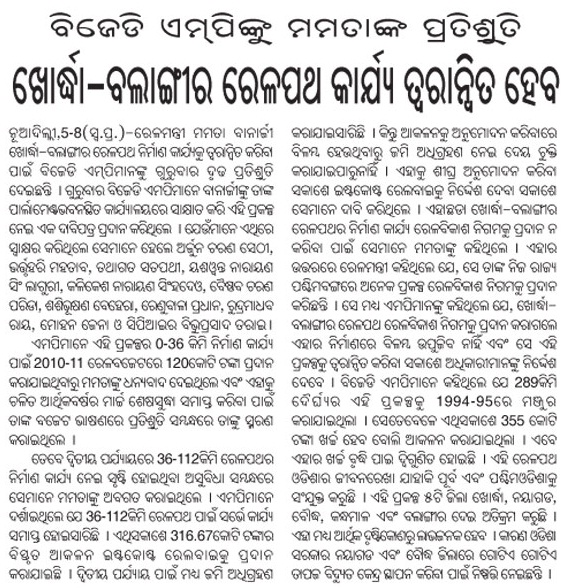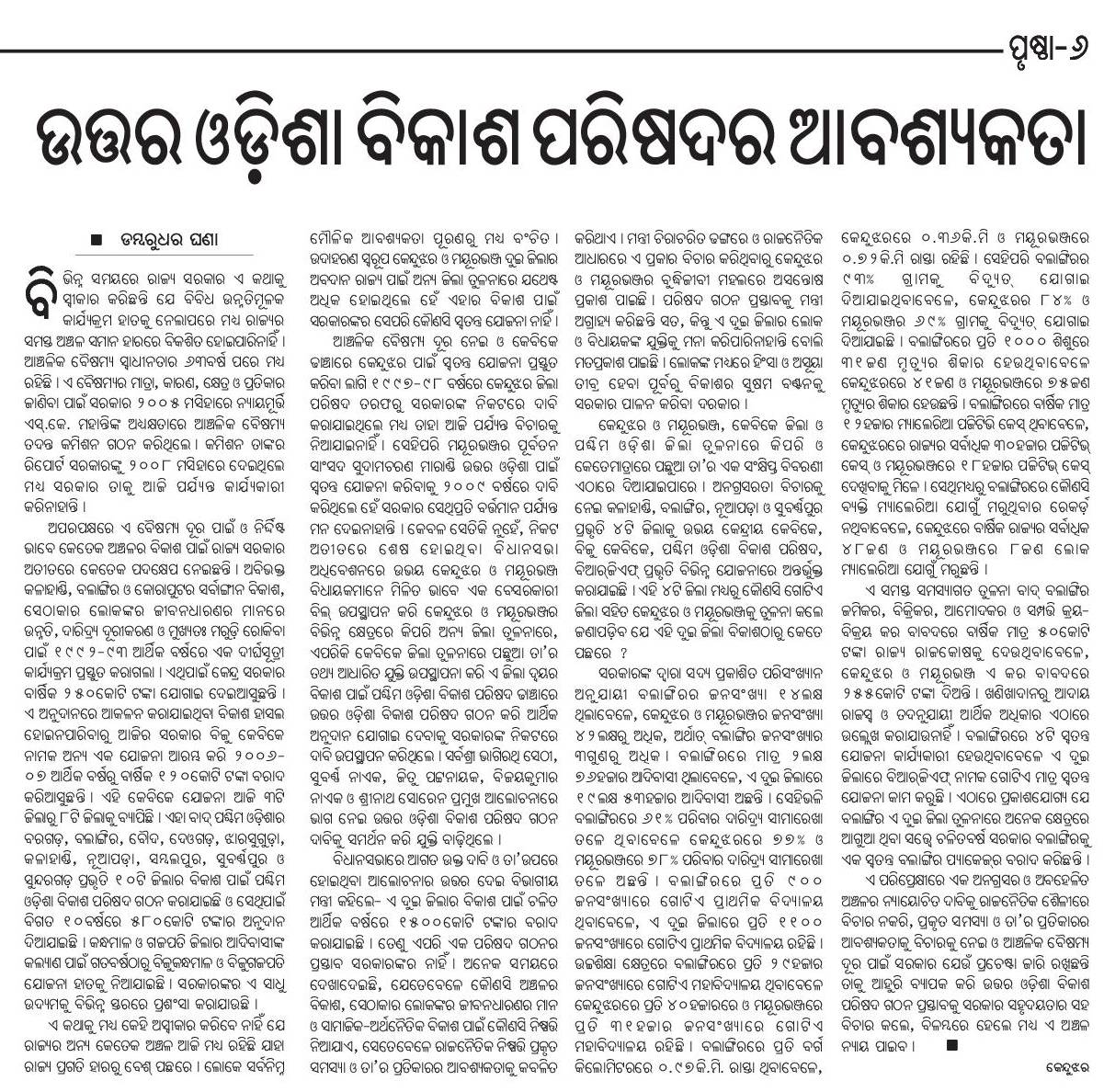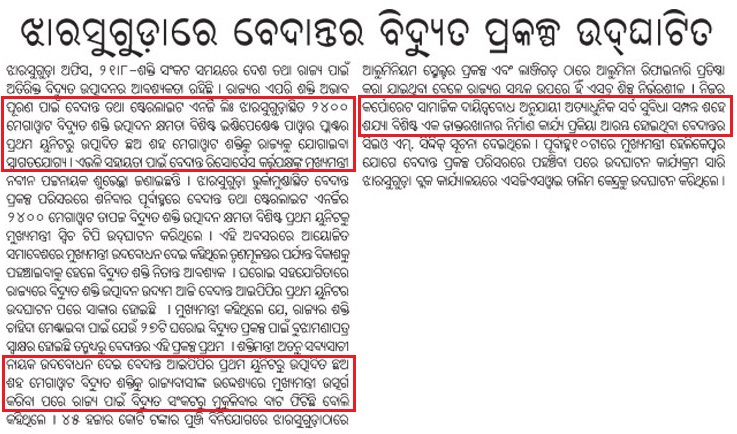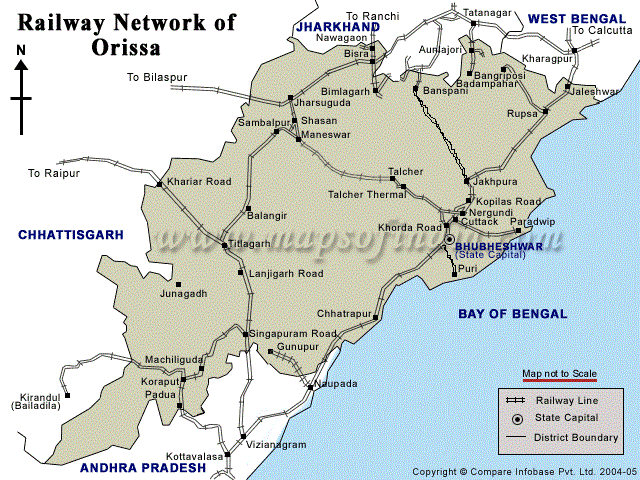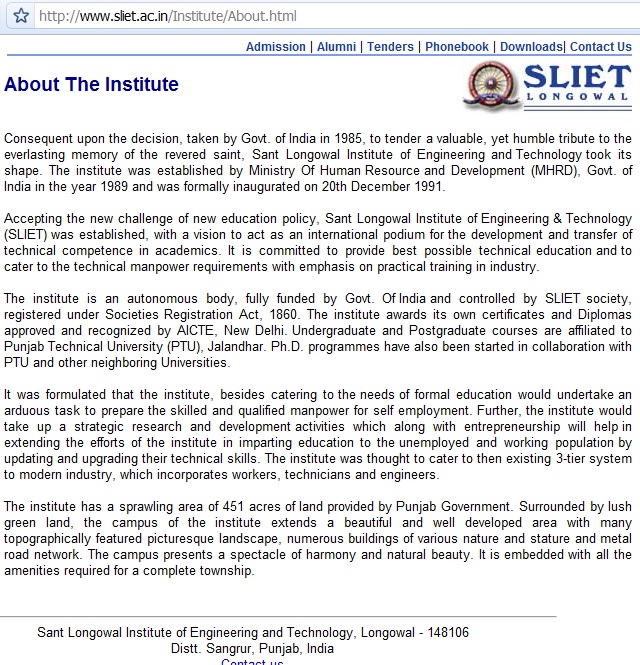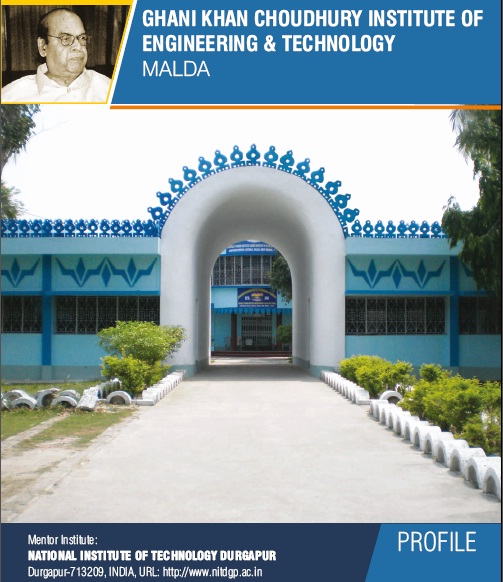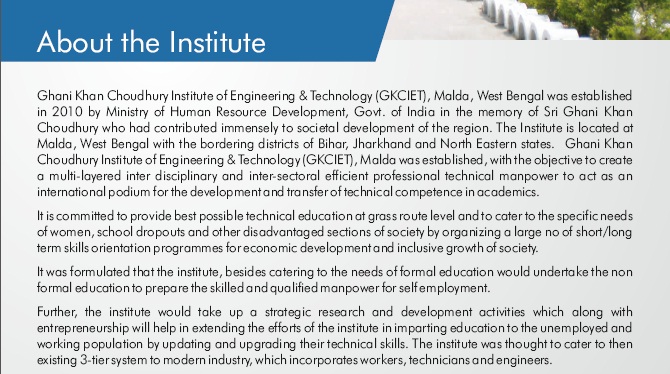Fabulous sand animation by a group from Puri in India’s Got Talent Khoj 2 (Season 2)
Update: They did a fabulous job in the finals on the theme of “Hindu Muslim Sikh Isai, Aapas Me sab bhai-bhai” and got 27 points from the judges; 9 from each of the three judges. But they did not win. (The winners got 28 points from the judges: 9+9+10.)
Wild card round that got them to the final on Taj Mahal (25th September):
Semifinal on Mumbai Terrorist Attack(18th September):
Quarterfinal on something dark (28th August):
Initial round on Global Warming (21st August):
After Cairn Energy acquisition Anil Agarwal could become the richest Indian
I don’t fully understand how this works, but following excerpt from a report in inbnlive.com may shed light to some.
The proposed takeover of Cairn Energy’s India business could see NRI billionaire Anil Agarwal emerging as the richest promoter of a corporate house ahead of Mukesh Ambani, who has ruled the list for long.
After the acquisition of Cairn India and a proposed IPO of group firm Sterlite Energy, Anil Agarwal, as head of the promoter family, would command an estimated networth of close to Rs 1,67,000 crore, ahead of Mukesh Ambani at Rs 1,45,275 crore, a comparison of promoter family holding valuations for leading groups reveals.
… At the same time, the acquisition would give the Agarwal family double the size of Anil Ambani group (whose promoter wealth currently stands at less than Rs 80,000 crore). The $ 9.6 billion takeover of Cairn India has already pushed Vedanta group head Anil Agarwal to the second position after Mukesh Ambani in terms of family net worth, measured in terms of value of shares held as promoters in five listed group companies.
Add to this, the value of shares he holds in aluminium major Balco and IPO-bound group firm Sterlite Energy, the promoter family wealth of Anil Agarwal group could rise to nearly Rs 1,66,938 crore.
In comparison, the promoter family wealth of Mukesh Ambani group currently stands at Rs 1,45,276 crore, based on the value of promoter holdings in two listed group firms Reliance Industries and Reliance Industrial Infrastructure. Without Sterlite Energy, which has proposed an initial public offer of Rs 5,100 crore, and Balco, where Vedanta group has 51 per cent stake, the total promoter family networth of the Vedanta group currently stands at Rs 1,38,465 crore. This includes the value of promoter shares in Sterlite, Hindustan Zinc, Sesa Goa (all listed in India) and that in UK-listed Vedanta Resources, as also the worth of proposed 60 per cent stake in Cairn India proposed to be purchased from Scotland-based Cairn Energy.
The total networth would rise by over Rs 28,000 crore if Balco is taken at par with its peer group company Nalco, which has a market cap of Rs 25,830 crore, and the group offloads 25 per cent stake in Sterlite Energy to raise Rs 5,100 crore.
Note that Rs 1,66,938 crore at today’s exchange rate of 1 USD = Rs 46.6525 comes to $35.78 Billion. That would put him at number 4 in the world. If a person of such net worth wants to establish a $3 billion university in Odisha and we turn him away that will the height of stupidity in our part.
Mamata assures that the first phase of Khurda Rd-Balangir rail will be finished in March 2011: Dharitri
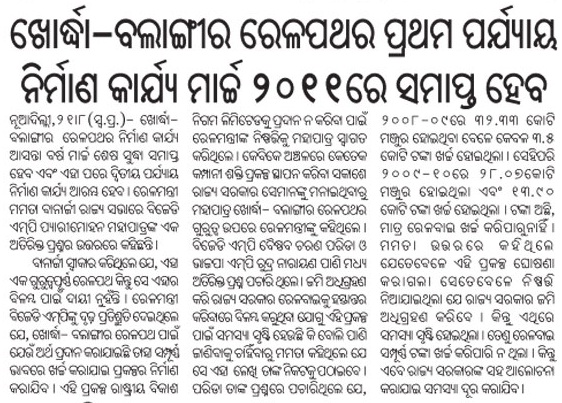
OTV report on efforts and progress with respect to Rangeilunda airport near Berhampur
(Thanks to Future Berhampur for the link.)
This is an welcome news. My guess is that if proper efforts are made then the situation with respect to air connectivity in Odisha could be as follows:
- Bhubaneswar airport would have a few international flights, better connectivity to big cities across India and small planes flying to nearby smaller airports.
- Jharsuguda airport would have flights to several cities in India.
- Airports in Rourkela, Berhampur, Jeypore and Rasgovindpur would have small planes (20-40 seaters) flying mainly to nearby larger airports.
- The locations mentioned above matches with the Tier 1 and 2 areas mentioned in the orissa2020 site.
- In the next tier will be airports at Angul, Therubali, Utkela (Kalahandi) and others. (See the list of airstrips in Odisha here.) I think because of the industries Angul and Therubali will be the leading contenders.
How to go about having commercial flights into Rourkela
The best way to get commercial flights to Rourkela is to make a case with the various private airlines. If any one of them agrees, the rest regarding what authorizations would be needed to enable the planes to fly to the SAIL airport in Rourkela would not be hard. Couple of years back the then DM of Sundergarh was very close to convincing Air Deccan to fly to Rourkela. One needs to get in touch with the current DM and revive that process.
Until the Jharsuguda airport becomes functional commercial flights to this airport is sorely needed. Even after that, enough traffic now may result in commercial flights continuing their presence in the airport. So in a sense this is the last chance (for 10-15 years) for Rourkela people to have commercial flight connectivity.
Tata’s Gopalpur plan taking shape; Berhampur on its way to prime time
Following is an excerpt from a report by Dilip Satpathy in Business Standard.
… Tata Steel has finally geared up to put to use its 3,200 acres of land lying idle at Gopalpur in Orissa. Playing the role of the anchor tenant for an industrial park proposed to come up on this patch of land, the company is all set to launch two projects: a 50,000 tonne per annum ferroalloys plant and 40,000 tonne per annum bar mill there.
The two projects together are estimated to cost about 1000 crore.
… "To start with, the proposed two units, the ferroalloys plant and the bar mill, will be our anchor investment. But our ultimate objective is to make this industrial park attractive for investors in the field of steel and steel downstream, speciality and bulk chemicals and engineering", said a senior official of the company.
While the ferroalloys plant will cost about Rs 200 to 250 crore, the bar mill will be set up at an investment of Rs 750 to Rs 800 crore. This will be the third ferroalloys plant of Tata Steel in Orissa. The company is operating two ferroalloys plants at Bamanipal and Athgarh (through its subsidiary Rawmet) with capacities of 50,000 tonnes per annum each.
For the bar mill, the company intends to get the ingots from Jamshedpur by rail and road. Similarly, the company will source raw material for the ferroalloys plant, which will be a backward integration project for the company’s proposed six million tonne plant at Kalinganagar, from its chromite mines in Sukinda valley. Both the units are expected to be commissioned in 30 months time.
It may be noted Tata Steel had acquired 3,700 acres (including 500 acres for the rehabilitation colony) in mid 1990s for setting up of a 10 million tonne steel plant at Gopalpur. However, it shelved the project and the land was lying vacant.
… The infrastructure for the industrial park will jointly be developed by Tata Steel and its associate company, Tata Realty and Infrastructure Ltd (TRIL). A feasibility study on the complex has been done by Ernst and Young while another internationally famed consultant, Jurong of Singapore is currently preparing its master plan. The master plan will be ready in 3 to 4 months following which the company will market the project and attract investors to set up their units in the park, said the sources.
The cost of infrastructure, which includes developing the land and providing road, rail, power, water supply facilities within the park and linking them to external sources, is estimated at about Rs 5000 crore.
This is really great for the Berhampur area. With a fabulous beach and port next door in Gopalplur, good road and rail connectivity, decent infrastructure (a university, a government engineering college, a medical college, several private engineering colleges), nearby tourist spots (such as Chilika lake), and a multi-cultural and multi-lingual population Berhampur is ready for prime time. It just needs to be marketed at a national level.
Moreover, its proximity to the Bhubaneswar area is a big plus. From Khurda Rd (the current southern edge of the greater Bhubaneswar area) it is only 147 kms. Being connected to Bhubaneswar by one leg of the Golden Quadrilateral, one can drive between the two areas in less than 2 hours. So even if it does not yet have air connectivity, its closeness to Bhubaneswar airport will come in handy.
Bringing up KBK by building its infrastructure: plans for what to realistically push with the central government for the next 7 years
Various KBK statistics are known to everyone here as well as to the planning commission. We will not rehash them here. We will just like to point out that various programs in KBK (such as RLTAP) will not work to their potential unless qualified people are willing to be there to implement those programs and unless there are enough local people who are qualified. For example, one can open schools and hospitals and initiate irrigation projects. But if teachers, doctors and engineers do not go there in sufficient numbers to staff the schools, hospitals and irrigation projects they will not achieve their impact. So while we make programs for schools, hospitals and irrigation projects we need to pay attention to the infrastructure aspects that will (a) create enough local teachers, doctors and engineers and (b) will not deter teachers, doctors and engineers to come to this place.
With that in mind we propose that the following be pushed with the central government for implementation in the next 7 years — the remaining part of the 11th plan and the 12th plan starting in 2012. I think the list below is doable. (Much more needs to be aimed for and done through the state government, industries and people in this region; but here we only focus on what one can realistically push with the central government and achieve.)
1. Railway Infrastructure: The Railway infrastructure of the KBK districts need to be drastically improved. In particular there are several approved lines that need to be speeded up. In addition there are some hanging lines that need to be extended and completed. The following shows the current Railway lines in Odisha.
The following picture shows the lines that bring better rail connectivity to the KBK districts. The ones in brown have been approved and we request that they be completed within the next 2-3 years and. We request that the ones in blue are approved and completed within 5 years.
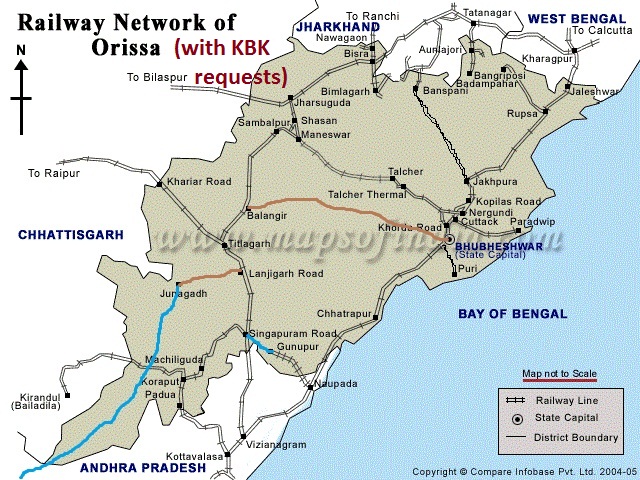
2. Airport at Jeypore: Currently Odisha has one airport with commercial flights. That is in Bhubaneswar. AAI is in the process of making another airport at Jharsuguda. We propose that another airport be built near Jeypore-Koraput with commercial flights in mind (small planes to start with) to serve the KBK area. An airstrip is already there. The following map shows the location and its distance from the other airports in India.
.jpg)
3. Roads: On roads, we request that the construction of the Vijaywada-Ranchi highway be expedited. More.
4. HRD/Education: The 11th plan has good proposals regarding schools, ITIs and model colleges. But as we said in the beginning of this document, KBK needs to produce its own teachers, doctors and engineers.
As a first step the Odisha government decided to locate the Central University of Odisha in Koraput. However, considering the vast area of KBK, we request the following.
4.1 The 11th plan has provision for having medical colleges and engineering colleges in 5 of the 16 new central universities. (See the page from Volume 3 of 11th plan below.) We request that the one of those medical college and engineering college be established as part of the Central University of Orissa, Koraput.
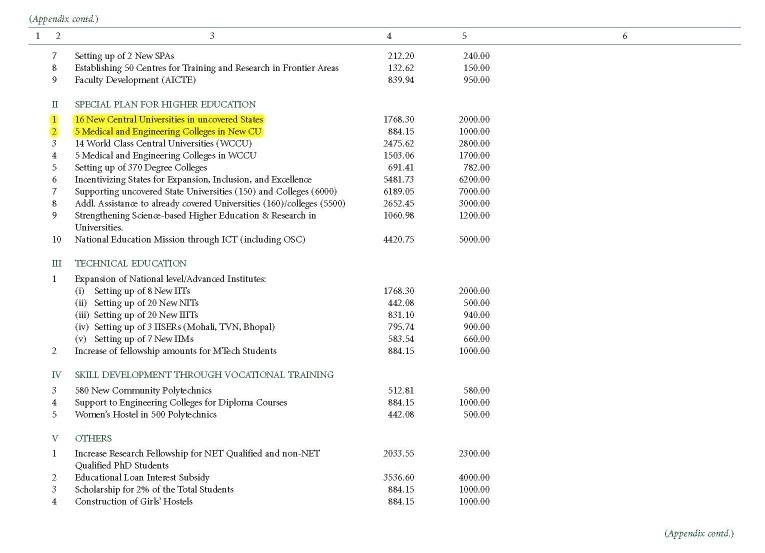
4.2 A centrally funded engineering college of the kind in Longowal Punjab (SLIET), Kokrajhar Assam and the one being made in Malda (GKCIET): These three centrally funded engineering colleges have rural focus and we request that one such rural focused 3-tier (catering to workers, technicians and engineers) is needed for KBK. We request that it be made in Balangir. In the next page we have cut-outs related to the above mentioned three colleges which show their mission perfectly matches what is needed in the KBK districts.
4.3 Upgradation of Food Craft Institute Balangir to an Institute of Hotel Management.
4.4 Some kind of a centrally funded institute in Kalahandi: One has to be realistic in pursuing something that is achievable; something central government has established in smaller towns in other states; something with similar philosophy as SLIET/GKCIET/CIT-Kokrajhar but in a different field.
Added on Dec 11th 2010: I think a Central Agricultural University can be pushed for Kalahandi. Currently a Central Agricultural University exists in Imphal (http://www.cau.org.in/). I came across the news item in http://bundelkhand.in/
4.5 Special funding for proposed state Universities in KBK: The Odisha government higher education task force has recommended new state universities to be made in Jeypore (Koraput), Bhawanipatna (Kalahandi) and Balangir. We request that the central government give a one time 50 crore grant to each of these proposed universities so that they can be started at the earliest.
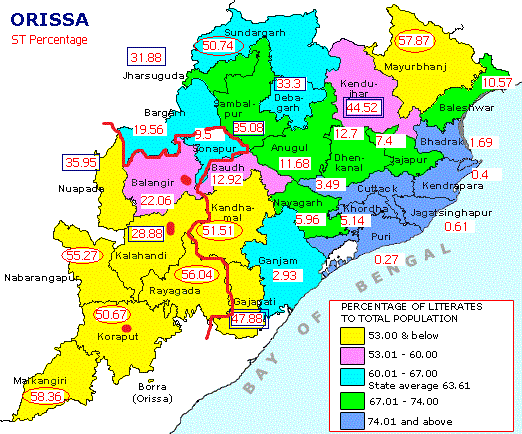
5. Job Centers:
- Wagon factory in Kalahandi.
- Tourist infrastructure around Gandhamardan hills and Harishankar.
- Tourist infrastructure around Kolab dam and tribal hamlets of Koraput.
6. KBK+: In addition in the KBK+ district of Kandhamal a branch of Indira Gandhi National Tribal University (IGNTU) can be realistically pursued and achieved.
Final Word: Please make additional suggestions. But be realistic. Also, note that here we are talking about what to pursue with the central government.
MP Kalikesh Singh Deo’s interview: his plans for Bolangir
The following links were found from http://kalikesh.com/videogallery.html. In it the interviewer mentions about visible efforts to make the roads in Bolangir good. Kalikesh talks about improving the physical infrastructure. He mentions the state government efforts regarding developing a tourism circuit around Harishankar. He mentions the medicinal plants, but does not mention the name "Gandhamardan." (He should consider developing a campaign around the name "Gandhamardan" as that word is familiar to people across India.) He mentions a state government allotment of 5 crores for development of a complex in Harishankar and building an ayurvedic college. He mentions the food craft institute.
Odisha government responds to the Saxena Committee report on Vedanta’s operations in Kalahandi
I don’t have the letter that the Odisha government wrote. But the following excerpts from a report in tathya.in gives some idea.
… However responding to the report, in a letter to the Ministry of Environment & Forest (MOEF), the State Government has said that “it is shocking to note that the Saxena Committee has preferred to discuss in a derogatory manner the issues, which have been considered and adjudicated by the Supreme Court of India.”
Upendra Nath Behera, Principal Secretary of the Department of Forest & Environment (DOEF) in his letter to the Secretary, MOEF has said that a preliminary study of the report shows that it has raised serious allegations against the State Government.
It has cast aspersions on the intention of the State Government about implementing the Forest Rights Act (FRA), when the Government of Odisha is credited to be the second best performing state in the country in implementation of FRA.
The report has asked the MOEF to reject the application of the State Government for diversion of forest land for the above purpose as mining in Niyamgiri will destroy wildlife habitat and it will cause hydrological disaster.
It has also said that mining will destroy the cultural, religious and economic habitat of the Dongaria Kondhs, who reside in the forest area proposed for diversion.
The State Government has pointed out that the issues raised by the Saxena Committee were the subject matter of different PILs filed by various activists before the Central Empowered Committee (CEC), which ultimately came up before the Supreme Court.
In view of the technical issues raised in the applications, the Apex Court had directed MOEF to appoint expert bodies for examining various issues.
The Wildlife Institute of India, Dehradun had conducted studies on the impact of the mining project on biodiversity and wildlife including its habitat.
The Central Mine Planning & Design Institute (CMPDI), Ranchi conducted studies on the impact of the mining project on soil erosion, impact of ground vibration on hydrological regime including ground porosity and permeability.
All these issues were discussed in the Forest Advisory Committee (FAC) on 30 August, 2006, when the project was placed before the Committee for scrutiny.
Similarly the project was challenged in the Supreme Court on the grounds of violation of FRA.
After elaborate discussion of the reports of the expert bodies, views of the State Government and MOEF covering all issues relating to ecology, wildlife, hydrology, soil erosion, tribal life and implementation of different environmental laws, the Supreme Court on 23 November, 2007 cleared the project with certain directions.
On compliance of all the directions of the Apex court, the project was cleared by the Supreme Court on 8 August, 2008.
The State Government has said that “it is of course, understood that the MOEF has not taken a view on the recommendation of the Committee."
The Government of Odisha in its’ letter has said that “it believe that if a judicious view is taken by the MOEF, most of the findings of the Saxena Committee will not hold water."
Under this backdrop, the State Government has urged the MOEF to provide an opportunity to present its’ views before taking a final decision in this matter.
Jairam Ramesh, environment, Vedanta and Odisha
People reading this blog must must have seen the news about the Saxena committee (which was empowered by Jairam Ramesh and the environment ministry) report on Vedanta’s operations in Lanjigarh, Odisha.
Although the report reads like an activist team’s report, the fact remains that the laws of the country are sacred and needs to be followed.
It is a different matter that laws are broken with impunity at all levels ranging from the laws reported to be broken by Vedanta to normal people extending their houses and gardens into government land, groups building temples as a ruse to capture government land where ever they feel like, people blocking roads, trains, doing bandhs whenever they feel like, etc. etc. In India laws are broken with impunity and are broken more often than they are adhered to. But this does not excuse what Vedanta is reported to have done. The committee report also rebukes the Odisha government for its hand in the whole affair.
However, one needs to put this report in perspective with what the environment ministry and Jairam Ramesh have found in rest of India. Following are excerpts from a report in rediff.in that gives us some added perspective.
… several industrialists are also upset about what they call Environment Minister Jairam Ramesh’s activist-like positions. "He is taking positions, which are normally associated with unreasonable activists and their organisations," says one leading industrialist whose project is stuck. …
… Data from the ministry’s website show that of the 58 projects that have come up for Coastal Regulation Zone clearance since April 2009, it gave only half a dozen of them the green signal.
Over 1,800 projects are awaiting clearances as of the first week of this month.
…"There are people who consciously instigate and organise people in coastal Andhra against projects coming up in the region," says a spokesperson of a power company, which is promoting a project in coastal Andhra Pradesh.
"Land availability is a big issue in India. Developers can approach the ministry only after either acquiring the land or have assurances to get the land, to request for the terms of reference to carry out an Environmental Impact Assessment study. By that stage, a lot of investment and time may have gone into execution of the projects, and still you are not sure of getting the clearance," says Sanjay Sethi, executive director (infrastructure) at Kotak Investment Banking.
"It is necessary to have more transparent and clear guidelines and checklists for land available for various commercial and industrial uses, with clear maps of sensitive zones, which should be easily available to project developers," he adds.
… To be fair to the environment ministry, there are issues like misrepresentation of facts by project developers and the state, or conflicting reports on issues by expert panels.
In a recent development, the environmental clearances for at least four projects in an around Srikakulam in Andhra Pradesh were suspended by the ministry.
On July 15, the ministry cancelled the clearance given to Nagarjuna Construction Company’s 2,640 megawatt (Mw) coal-based super critical thermal power plant at Gollagandi and Baruva villages in Srikakulam.
An expert panel said most of the project land allocated by the state government might be regarded as wetland, contrary to an earlier panel report that the 750 acres of grasslands were barren and not fit for agriculture.
The same expert panel, which visited East Coast Energy’s 2,640 Mw thermal project near Kakarapalli village in Srikakulam during the same time, found the state government had ignored reports on the ecological value of low lying areas of the well recognised Naupada swamps wetland and migratory bird breeding in nearby Telineelapuram of Srikakulam.
"This amounts to suppression/distortion of facts," the panel said.
A nearby project – that of JSW’s 1.4 million tonnes per annum (MTPA) alumina refinery and a co-generation plant – is also being reviewed by the ministry.
… On June 28, the ministry directed the formation of a supervisory committee to monitor the influence of toxic effluents from JSW Energy’s 1,200 Mw thermal power plant at Jaigad in Maharashtra, following apprehensions that effluents could affect the quality of Alphonso mangoes and cashew orchards in the region.
… Ten days before that, Jindal Power Limited drew the wrath of the ministry for commencing construction of a 2,400 Mw power project at Tamnar in Chhattisgarh, without obtaining prior environment clearance.
The ministry has directed the state government to stop work and initiate action against the Naveen Jindal-promoted company.
Some of the other high-profile projects that have been halted include the Maheshwar Hydroelectric project on the Narmada river in Madhya Pradesh on grounds that the conditions of the statutory environmental clearance were not complied with and the resettlement and rehabilitation of the project-affected families was less than satisfactory – charges denied by the state chief minister and the company.
… Also, many say the minister has involved himself in much-publicised wars of words with Civil Aviation Minister Praful Patel over the environment ministry’s reluctance to clear the Navi Mumbai international airport, citing destruction of mangroves, razing of a hill and diversion of two rivers; with Road Transport Minister Kamal Nath, who openly accused him of blocking projects;
… But, even his sharpest critics agree on one thing: Ramesh has made sure that no one can treat the environment ministry lightly any longer.
… "This is probably the first time that an environmentalist has become a minister. He is almost single-handedly bringing about a paradigm shift within the government about how to view progress and development," says Pandey.
I agree with the sentence in the red. Earlier companies and state governments were not taking the environment ministry that seriously. Ramesh’s actions will make sure that everyone take the environment ministry seriously. That is a good thing and kudos to Mr. Ramesh for that.
However, as far as Odisha is concerned Jairam Ramesh seems to have something against it. We say that for the following reasons.
- When Odisha was trying for an IIT Jairam Ramesh insulted Odisha with his comments. See http://www.orissalinks.com/archives/286.
- Recently, Hindustan Times (see http://www.hindustantimes.com/Environment-Ministry-puts-on-hold-Vedanta-University-in-Orissa/Article1-542363.aspx) reported the following: "The Union Environment Ministry on Tuesday put on hold the controversial Rs.150 billion Vedanta University project in Orissa following complaints of alleged irregularities by its promoter Anil Agarwal Foundation. The direction to keep the project in abeyance has come within a month of the Ministry granting conditional environmental clearance to the Foundation which is building the university." Now stopping a mine or a factory or an airport for environmental reasons may make sense, but a university?? That too, just because some one complained. No investigation! Just people complained and he stopped the project, when the project was about to construct a medical college!!
- Jairam Ramesh and his ministry recently granted environmental permission to construct the Polavurum dam in Andhra Pradesh against the objections of the Orissa and Chhatisgrah government. See http://timesofindia.
indiatimes.com/india/ Environment-ministry-clears- Andhra-project/articleshow/ 6233874.cms . Times of India was surprised with this. It wrote: "Oddly, while the ministry had set up separate committees to investigate the settlement of rights under the Forest Rights Act in other high profile cases such as Vedanta and Posco which propose to displace far lesser people, in the Polavaram case the ministry has decided to accept the state government’s compliance report on face value. The mega-project is expected to submerge 276 villages displacing upwards of two lakh people by some estimates. "
In summary, while Jairam Ramesh deserves kudos for putting his foot down on environment laws and making sure everyone takes them seriously, people of Odisha need to be very careful of him as he seems to be against Odisha; he has stopped projects clearly beneficial to Odisha (namely, Vedanta University) by using his environment stick, and at the same time has allowed projects clearly harmful to Odisha (namely, the polavurum dam) even after the Odisha government and Odisha chief minister have vehemently objected to it. This does not at all gel with the actions they took against Vedanta University. There the project was ordered to stop because some people complained. Here the project was given green signal despite the state of Odisha and its chief minister complaining and that too reportedly without any enquiry.
Five new flyovers will allow people to zip past the busy parts of Bhubaneswar
Following is an excerpt from a report in Telegraph.
Five upcoming flyovers between Baramunda and Palasuni on National Highway 16 will reduce the commuting time of the city’s passengers in the future.
The National Highways Authority of India (NHAI) has planned to construct flyovers at important junctions like Fire station, CRP Square, Acharya Vihar, Vani Vihar and Rasulgarh.
These four-lane flyovers are expected to ease traffic problems along the Kolkata-Chennai highway (NH 16).
NHAI project director Aditya Kumar Ray said here today that an agreement was signed between Sri Jagannath Expressway Pvt. Ltd and the NHAI on August 6 for redevelopment project of the 67-kilometre stretch between Bhubaneswar-Cuttack-Chandikhol. The five fly-overs are part of the project.
“The total cost of the project would be around Rs 1,250 crore and the construction period will be two and half years. Sri Jagannath Expressway Pvt. Ltd will also take care of the maintenance of the road for 26 years (including the project execution period) as per the agreement,’’ Ray said.
“While the preliminary work will begin from October, the final work will start from December. We will try to make it a point that construction work along the entire stretch finishes on time,” he said.
… “These upcoming flyovers will have controlled access to the highway. Commuters will have to take turns at the respecting connecting roads to reach their destinations. There is also a plan to include construction of new flyovers at Phulnakhara, and Link Road-Khapuria starting from Kathjodi bridge and Manguli,’’ he added.
NH 16, which was earlier NH 5, has been clubbed with NH 60 (the Lakshman Nath-Balasore highway). Gazette notification has already been made on this highway as it falls under the Golden Quadrilateral project.
According to sources, in the past there was a plan by the NHAI to construct three flyovers at Khurda, Khandagiri and Baramunda. However, only the flyover project at Baramunda was realised, while the Khandagiri flyover plan was shifted to Jayadev Vihar to meet public demand.
As mentioned in the last paragraph, currently that stretch of NH-5 (to be called NH 16) has a flyover at Jayadev Vihar and at Baramunda. With the proposed flyovers at Fire station, CRP Square, Acharya Vihar, Vani Vihar and Rasulgarh the stretch from Rasulgarh to Baramunda would be smooth sailing without any traffic stops. See http://www.telegraphindia.com/1100813/images/13zzflyoverbig.jpg for a graphics of this stretch. The flyovers at Phulnakhara, and Link Road-Khapuria would make the streatch from central Cuttack to past Bhubaneswar without any traffic stops.
RBI study on corporate investment puts Odisha as the most preferred investment destination in FY 2010
Following is an excerpt from a report in Economic Times.
Maharashtra and Gujarat seem to have lost their status of the most preferred destination for investment. While Orissa, … has grabbed maximum amount of investments in FY10, thanks largely to capital intensive mining projects coming up in the state.
A Reserve Bank of India (RBI) study on corporate investment, which studied 796 projects in FY10 which involved bank/FI fundings, Orissa attracted highest investments of `74,757 crore in 31 projects, accounting for 13.4% of total investment intentions during the year. Maharashtra was a distant second with investments worth about `49,480 crore in 124 projects. Gujarat which used to be a top investment destination earlier, managed to attract only `16,572 crore in 72 projects during FY10 compared with `59,887 crore in 77 projects in the previous year. The other top investment destination during the year were Andhra Pradesh and Chhattisgarh.
“Much of these investments are in mining projects that are coming up in the state, as the state has opened up this sector and a number of hurdles are also being addressed. these are typically very high value projects. This could result in investment in projects already cleared picking up,” said an economist with a large corporate house requesting anonymity. More recently, among the large high value projects that have taken off in the state are in the mining sector like Hindalco’s alumina project and Vedanta’s bauxite mining project.
The RBI has noted that the location of high value projects tends to change the spatial pattern considerably from year to year. The location, in turn, depends on a host of other factors like the nature of the project, market size, growth prospects, availability of skilled labour, suppliers’ adequate infrastructure etc, it said.
Cabinet Committee of Economic Affairs (CCEA) approves Paradeep PCPIR: Region spread over 284.15 sq Km to attract investment of Rs 2.74 lakh crore
Update: Financial Express also reports on it. Following are some excerpts.
The PCPIR project in the state will be the fourth project in the country after West Bengal, Andhra Pradesh and Gujarat.The central government will provide rail connectivity, highway network and airports while the state government will provide the basic infrastructure, including power and water supply, said IDCO chairman, Priyabrata Patnaik.
This is huge. Rs 2.74 lakh crore is about $60 billion. Following is from a report in Business Standard.
Region spread over 284.15 sq Km to attract investment of Rs 2.74 lakh crore.
The Cabinet Committee on Economic Affairs (CCEA) today finally gave the green signal to the Petroleum, Chemicals and Petrochemicals Investment Region (PCPIR) project in Orissa proposed to be set up near Paradip.
"There was a meeting in New Dehi on the PCPIR project of Orissa and the CCEA has approved the proposal”, state industries secretary Saurabh Garg told Business Standard over the phone from New Delhi.
Orissa has become the fourth state after Andhra Pradesh, Gujarat and West Bengal to have got the Centre’s nod for this prestigious project.
The PCPIR project in the state would be set up on 284.15 sq km (70,214 acres) of land spread over Jagatsnghpur and Kendrapara districts. The PCPIR hub is expected to attract investments to the tune of Rs 2.74 lakh crore.
Phase-I work of the project is expected to be completed by 2015 while the entire project is scheduled for commissioning by 2030. The Orissa government would invest Rs 1796 crore on infrastructure development for the project.
Of the expected overall investment figure of Rs 2.74 lakh crore, the lion’s share would come from the petroleum and petrochemicals sectors at Rs 2.3 lakh crore followed by housing and allied infrastructure at Rs 23,500 crore, external infrastructure at Rs 13,634 crore and Rs 3,500 crore each for chemicals & fertilizers and ancillary sectors.
The mega project is set to create employment for 6.48 lakh people which includes direct employment for 2.27 lakh people and indirect employment for 4.41 lakh others.
The turnover of this PCPIR hub is estimated at Rs 4.23 lakh crore with an export potential of Rs 43,000 crore. The PCPIR hub is expected to generate taxes to the tune of Rs 42,000 crore and contribute six per cent to Orissa’s Gross Domestic Product (GDP).
Indian Oil Corporation Ltd, which will be the anchor tenant of the region, will set up a 15 million tonne per annum grassroot refinery cum petrochemical complex five km south of Paradip at a cost of Rs 29,777 crore.
This refinery cum petrochemical complex, which needs 3300 acres of land, is scheduled for commissioning by March 2012.The land acquisition process for PCPIR is on the fast track with the state owned Industrial Infrastructure Development Corporation of Orissa (Idco), the nodal agency for the project having filed requisition for 90 per cent of the total land requirement in Phase-I.The Phase-I of the PCPIR project needs 48,268 acres (195.34 sq km) in all out of which 22,232 acres (89.97 sq km) would be devoted to processing facilities while the balance 26035 acres ( 105.37 sq km) is the area set aside for non-processing facilities. Phase-I of the project is scheduled to be taken up during 2010-2020.
The entire project which is set to be completed by 2030, needs 70,214 acres (284.15 sq km) of land which includes 30,397 acres (123.01 sq km) of processing area and 39.817 acres (161.14 sq km) of non-processing area.
Out of the processing area of 123.01 sq km, 41.95 sq km is under operational units and almost 42.68 sq km (10,546.22 acres) has been acquired or is under acquisition by Idco and the balance area of 38.38 sq km needs to be acquired.
Idco has filed for land acquisition of 7,342 acres (30 sq km) for common infrastructure, utilities and accommodating downstream chemical converters and industries.
What’s Rahul Gandhi up to in Odisha?
Following article titled ” `Rahul hand behind POSCO, Vedanta mess’ – Cong counters BJD charge” is from Times of India Bhubaneswar edition. Thanks to HM for bringing this to our notice and sending it to us.
International airport at Bhubaneswar and functioning airports at Jharsuguda and Jeypore
Tathya.in has an article about this. Following are some excerpts.
The Odishans world-wide now recognize the need of International Flights to Bhubaneswar and Domestic Flights to Jharsuguda in order to effectively connect to the hi-tech businesses and tourism around the world.
Without the requisite air connectivity, Odisha cannot expect a jumpstart in development given all the potential that the state has in Tourism, Education and IT, feels Purna Mohanty, leading Non Resident Odia(NRO).
It all started during Pre Invest Bhubaneswar meeting at Hotel Swosti in May 2010, said he.
And then further concretized with hard-copy signature campaign during Invest Bhubaneswar and OSA Convention during 1-4 July, followed by Ratha Yatra Festival in Silicon Valley, CA, USA.
The signature campaign was completed and submitted to Prime Minister, Civil Aviation Minister, Chief Minister and Member of Parliaments.
NROs are thus presenting an overall proposal of Air connectivity in Odisha, with a request to consider & expedite the implementation of the following at the minimum:
Upgrade the 6 decade old regional Airport at Bhubaneswar to an International Airport at the earliest possible.
Expedite and complete the construction of ongoing western regional Jharsugda Airport in Jharsugda district, in western Odisha, within next two years.
The petitionodisha site has a petition on immediate upgradations of airports in Odisha. Please visit it. Besides signing it please also send emails (email addresses of where to send is given here) as in my experience emails have more impact than e-petitions. While our earlier email sample only mentioned Bhubaneswar and Jharsuguda, the petition adds Jeypore. It is indeed a good location for a 3rd functioning airport of Odisha. (We earlier wrote about it.) Feel free to add that to your email.
Pointers to relevant postings from the past:
- Jain Steel, an obstacle to Jharsuguda airport.
- Bhubaneswar international airport issue raised in the assembly.
- Jharsuguda airport status statement by the CM in the assembly.
- Campaign for international airport in Bhubaneswar and airport in Jharsuguda.
- Jharsuguda airport to be developed by PPP?
- Future airport plans (includes info on Jeypore and Rasgovindpur).
- 800 acres needed for Jharsuguda airport.
- Airstrips in Odisha.
- MOU to be signed for Jharsuguda airport.
State High-level Clearance Authority (SHLCA) clears project of 1,00,780 crores
Following are excerpted from Pioneer reports at here and here.
- Vedanta Aluminum would enhance its refinery, smelter and power plant capacity with a total investment of `37,440 crore. Vedanta Aluminium company would enhance its production capacity Langigarh unit to six million tonne from existing one million tonne. The company would also enhance its production capacity of Jharsuguda aluminium unit to 1.6 million tonne from existing 0.25 million tonne per annum. Similarly, the company would also increase power generation capacity of its CPP (captive power project) to 1,350 mega watt from existing 675 MW at Jharsuguda.
- NSL Nagapatnam’s `8,900 crore investment plans in the State. The company would set up a 1320 MW power plant in Angul district at a cost of `6,600 crore, a 5,000-tonne sugar refinery at Paradip with an investment of `800 crore and a textile and spindle mill with 3 lakh spindles at a cost of `1,500 crore at Rayagada.
- ACC Cement’s `1,850 crore three MTPA cement project along with a 50 MW CPP in Malkangiri district
- Bhusan Steel’s `3,000-crore steel park at Meramundali.
- SPI Ports to set up a 1,320 MW (2 x 660 MW) power plant at Mahakalpada in Kendrapara district at an investment of Rs 6,600 crore.
- KU Pvt Ltd would invest Rs 7,260 crore to set up a power project with 1320 MW power generating capacity at Thakurpur in Sonepur district.
- Rohit Ferro Alloys would spend Rs 2500 crore for setting up a 67.5 MW captive power plant at its 0.6 MTPA stainless steel project at Kalinganagar in Jajpur district.
- Aditya Aluminum to enhance the capacity of its Rayagada alumina refinery to 1.5 MTPA from the present 1 MTPA, and Jharsuguda smelter from 0.26 MTPA to 0.36 MTPA with an total investment of Rs 11,000 crore,
- Jindal India is proposing to enhance the capacity of its power plant from 1,200 MW to 1,800 MW with a total investment of Rs8, 000 crore.
- Ind-Bharat is proposing to expand its power project capacity from 700 MW to 1320 MW by adding a 660 MW unit with a total cost of Rs 3300 crore.
- Kalinga Energy, which is now shifting its site from Babuchaki in Sambalpur to Sodamal in Jharsuguda district has also got green signal to enhance the capacity of its power project from 1000 MW to 1320 MW with a total cost of Rs 6500 crore.
Ginning and bale processing unit of cotton to be established in Digapahandi Ganjam at a cost of Rs 1.2 crore
Following is an excerpt from a report in Business Standard.
A ginning and bale processing unit of cotton will be established in the cooperative sector at Digapahandi in south Orissa’s Ganjam district at a cost of Rs 1.2 crore.
This was announced by the officials of the Regulated Market Committee (RMC) while the Chief Minister Naveen Patnaik inaugurated the market yard at Digapahandi for the cotton farmers.
The market yard spread over 6.15 hectares (15.19 acres) of land, is being established under the Technology Mission for Cotton (TMC) under the Union ministry of textiles.
Around Rs 3 lakh is being spent on the development of the market yard. While the TMC had sanctioned Rs 1.50 lakh, the remaining amount would be met from the Rashtriya Krushi Vikash Yojana (RKVY) and RMC.
… The market yard has all infrastructure facilities including two godowns, each with a capacity of 500 tonnes, as well as cover shed, testing and training facilities for the farmers.
Jharsuguda to be the country’s largest power producer city: Samaja

I don’t know if being the largest power producer city is something good by itself. In general heavy industrialization is happening in Jharsuguda, and a full-fledged airport is coming up there.
However, matching HRD institutions and other amenities are not being made there. There are universities (Sambalpur U and VSSUT) and a medical college in Burla which is about 50 kms away, but none (except the private engineering college, Black Diamond) in Jharsuguda or its adjacent industrial townships of Belphar and Barajarajnagar. This needs to be corrected. Following are some quick thoughts.
- Branches of Sambalpur U and VSSUT should be established there.
- Jharsuguda Engineering School should be upgraded to an engineering college.
- One of the local companies, especially the ones mining in Ib, should be pushed to establish a medical college there.
Just outside Bhubaneswar, around 2,000 years ago, stood one of old India’s biggest cities: Sandeep Mishra in TOI
Following is from Sandeep Mishra’s recent article in TOI on recent excavations in Sishupalgarh adjacent to Bhubaneswar.
Just outside Bhubaneswar, around 2,000 years ago, stood one of old India’s biggest cities. When they chanced upon Sisupalgarh, excavators could only gape in astonishment at its modern ways
Sisupalgarh sounds like a happening settlement by historic standards: a sprawling urban settlement that housed 20,000-25,000 people, street-linking gateways, pillared meeting halls, water storage systems and disposable vessels for daily use. In one of the richest hauls for archaeologists in the country in recent times, a 12-member Indo-American expert team discovered the remains of a city from the early historic period in the outskirts of Bhubaneswar two years ago.
The team, comprising representatives from Deccan College, Pune, and the University of California, in collaboration with the ASI, had conducted surface excavations at the fortified site first reported by Prof B Lal in 1948. Fresh excavation was restarted in 2005 to learn more about this mystery city. A large quantity of debris, including household pottery and terracotta ornaments, were discovered during the exercise.
Enthused over the findings, the head archaeologist of the excavation, Monica L Smith from the University of California, had then told TOI: "This is the most visible standing architectural monument discovered in the country so far. It is a huge city existing about 2,000 years ago." The pillars were possibly part of a gigantic structure and used for public gatherings. According to an archaeologist from Deccan College, Pune, R K Mohanty, a city could be known from its walls. "When it has such well-built walls and such a big expanse, it means it was a very important city," he says. Explaining the importance of the ancient city, Mohanaty says Sisupalgarh has four gateways and could have housed a large number of people (compare this to the 10,000 Athens could manage). From photographs taken through geophysical research methods, the team had found that a huge urban setup, a much larger area than could possibly be excavated, had existed at the site. "The findings were mind-boggling. The lifestyle of the people then could be more advanced than present-day life," Smith had said. "Potteries found are polished and have ownership marks. The huge number of cups and bowls suggest people then practiced a use and throw system."
It is hard to say what sent Sisupalgarh into terminal decline. The data and findings when they will be made available to scholars could lead to a conclusive answer.
Read more: A city bigger than Athens? – India – The Times of India http://timesofindia.indiatimes.com/india/A-city-bigger-than-Athens/articleshow/6270354.cms#ixzz0vvqrI6HJ
Status of Tata’s Gopalpur SEZ
(Thanks to Future Berhampur for the pointer.)
Following is an excerpt from a report in Business Standard.
… The SEZ will come up on 3585 acres of land acquired by Tata Steel. The company had acquired the land in mid 90s for setting up a steel plant. But with the project being shelved later, it had decided to use the land for setting up of a SEZ.
“Tata Steel has kicked off work on boundary wall construction and land leveling work in the first phase. The company has engaged 400 labourers for the SEZ work”, industries minister Raghunath Mohanty said in a written reply in the state legislative assembly.
About four km of boundary wall has been constructed and the work on remaining six km of boundary wall is underway.
“The company has taken possession of 2792.65 acres of private land and 792.64 acres of government land for the SEZ. It expects to complete boundary wall construction and land leveling work on the Gopalpur SEZ project by December 2010”, the minister added.
Oisha BJD MPs meet Mamata Banerjee on Khurda-Balangir line: Dharitri
